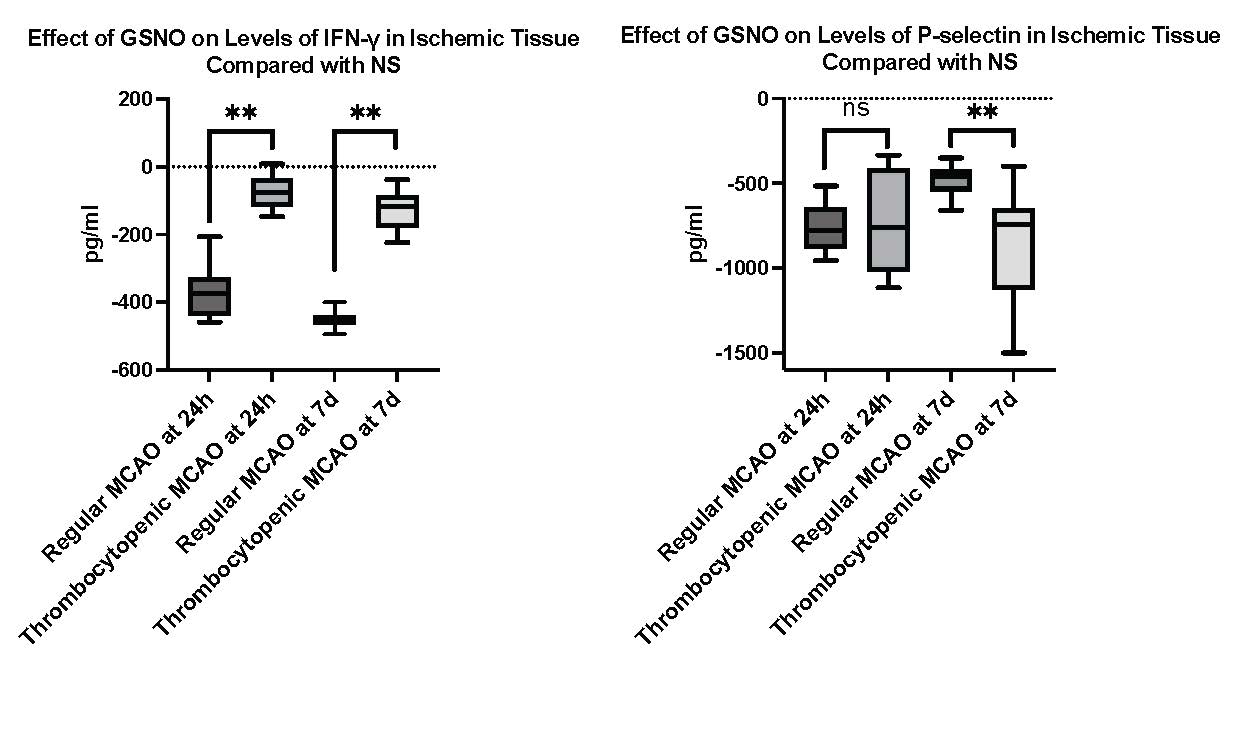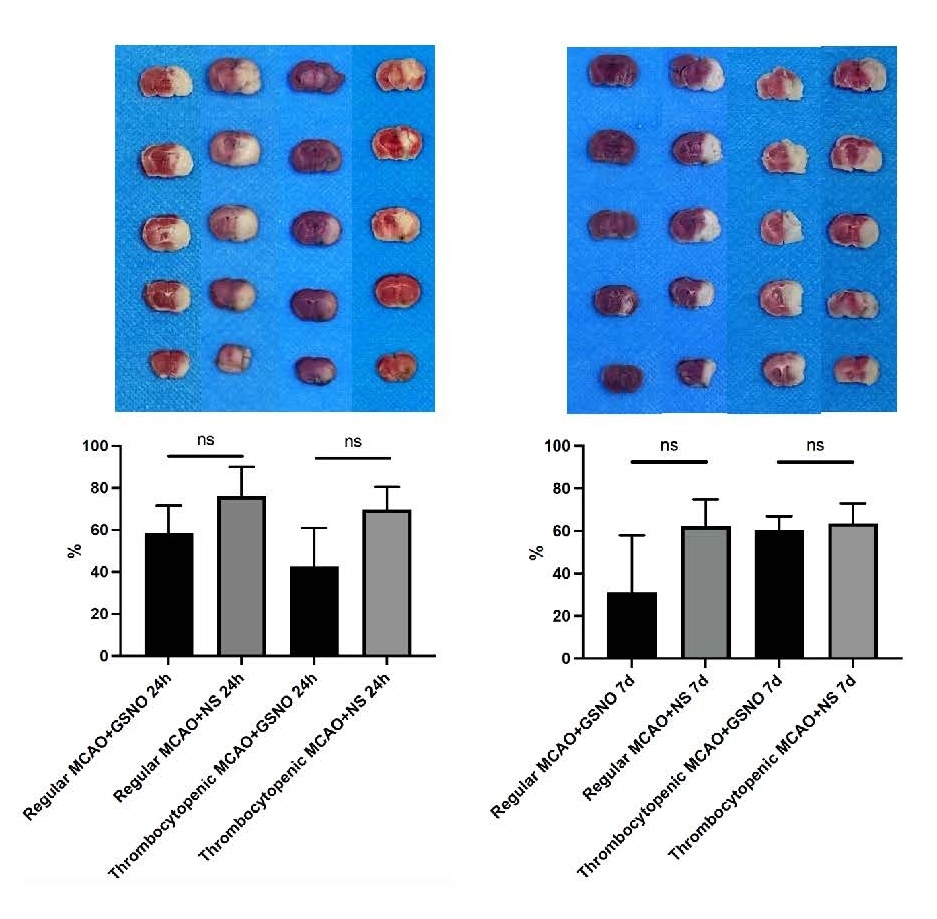Final ID: TP376
S-nitrosoglutathione Reduced Ischemia/reperfusion Injury by Relieving Thrombo-inflammation in Experimental Stroke Models
Methods: Male C57BL/6 mice (n=160) were 10-week-old (20-25 g) at the time of surgery. Mice were administered with carboplatin (60 mg/kg body weight) intraperitoneally to build thrombocytopenic models. The animals were randomized and coded by an independent researcher who was not involved in the data analysis. Investigators involved in the surgery and evaluation of all parameters were blinded to the experimental groups. The mice were randomly divided into four groups: 1) regular I/R models with iv. normal saline (NS), 2) regular I/R models + 1 mg/kg iv. GSNO, 3) thrombocytopenic I/R models with iv. NS, and 4) thrombocytopenic I/R models +1 mg/kg iv. GSNO. All animals received humane care in compliance with Beijing Tiantan Hospital’s guidance. Levels of P-selectins, interferon (IFN)-γ and infarct volume and were compared.
Results: Mean blood platelets count was 177 10^9/L in the mice administrated with carboplatin, and 383 10^9/L in the mice without carboplatin administration (p < 0.05). Comparing with the mice treated with NS, P-selectin in the ischemic brain tissue were significantly decreased after injected with GSNO either at 24 h (1610.5 vs. 863.0 pg/ml, p < 0.05) or at 7 d (1056.8 vs. 590.0 pg/ml, p < 0.05) in regular mice, and in thrombocytopenic mice (2874.2 vs. 2113.0 pg/ml, p < 0.05, at 24 h) and(3088.0 vs. 2373.0 pg/ml, p < 0.001, at 7 d) (Fig1). After treating with GSNO, levels of IFN-γ were decreased in regular mice (24 h: 635.4 vs. 244.8 pg/ml, p < 0.05; at 7 d: 559.2 vs. 100.0 pg/ml, p <0.05)and thrombocytopenic mice(24h: 423.0 vs. 491.8 pg/ml, p < 0.05; 7d: 319.6 vs. 155.4 pg/ml, p < 0.05)(Fig1). GSNO tended to have the effect of decreasing infarct volume in regular mice(24h: 65% vs. 79%, p = 0.11; 7d: 31% vs. 62%, p = 0.05) and thrombocytopenic mice(24h: 42% vs. 79%, p =0.06; 7d: 60% vs. 62%, p =0.69)than NS (Fig2).
Conclusions: GSNO reduced inflammation by limiting platelets activation to protect I/R injury in experimental stroke models.
More abstracts on this topic:
Li Zhen, Borch Jensen Martin, Vondriska Thomas, Lefer David, Gehred Natalie, Gromova Tatiana, Lapenna Kyle, Sharp Thomas, Chen Jingshu, Shambhu Smitha, Yu Xiaoman, Goodchild Traci
A mechanism whereby SGLT2 inhibitor dapagliflozin reverses cardiac diastolic dysfunction in a model of HFpEFLiu Man, Liu Hong, Kang Gyeoung-jin, Kim Eunji, Neumann Mitchell, Johnson Madeline, Murikinati Ruthvika, Dudley Samuel
Readers' Comments
We encourage you to enter the discussion by posting your comments and questions below.
Presenters will be notified of your post so that they can respond as appropriate.
This discussion platform is provided to foster engagement, and simulate conversation and knowledge sharing.
You have to be authorized to post a comment. Please, Login or Signup.


